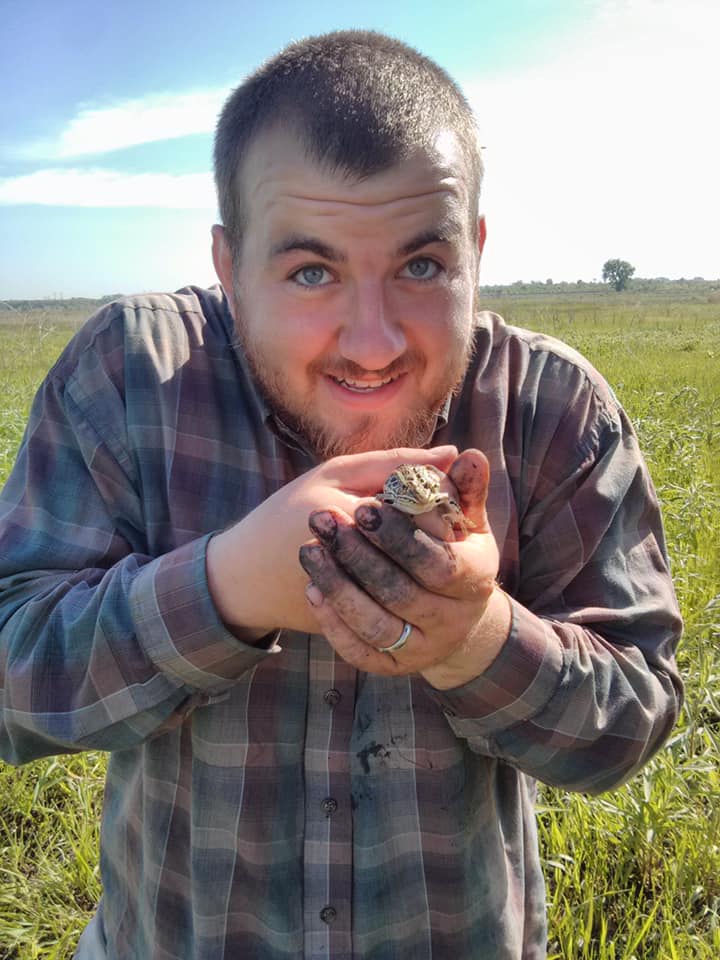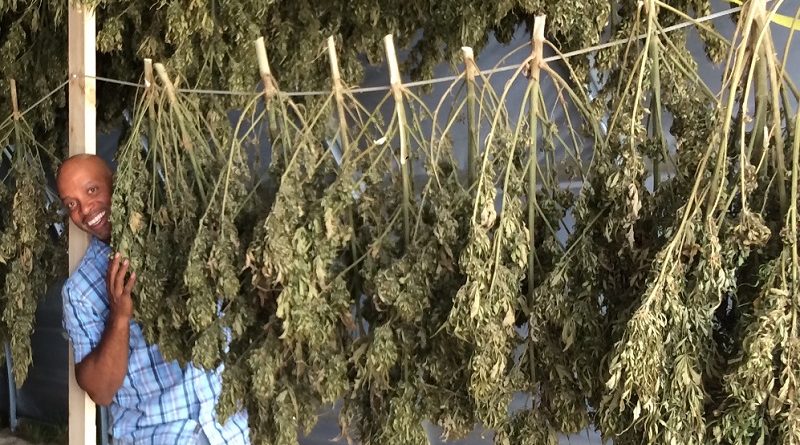Know Your Grow with William Moss
Podcast: Play in new window | Download (Duration: 1:33:36 — 43.8MB)
Subscribe: Apple Podcasts | Spotify | Android | iHeartRadio | Podchaser | Email | TuneIn | RSS | More
(February 16, 2020) Know Your Grow is good advice no matter what kind of plant you have. But in the case of William Moss, it has a special new meaning. Moss, sometimes known as “The Garden Boss,” is founder of Get Out and Grow. Its mission is to educate and inspire more people to interact with nature. He’s more or less a regular on The Mike Nowak Show with Peggy Malecki.
We usually see him around the time of the Chicago Flower & Garden Show. That’s because he often does horticultural demonstrations at the show. For instance, in 2019 he was the Official Potting Parties Instructor.
But let’s get back to Know Your Grow. That has to do with the brave new world of Cannabis in America. On January 1, 2020, Illinois was added to the list of eleven states to have legalized recreational use of marijuana (Cannabis sativa). However, as we reported in January it has been legal to grow another form of Cannabis sativa–hemp–in Illinois for more than a year. This followed the passage of the 2018 Farm Bill, which legalized commercial production of hemp across the United States.
Hemp has been described as a miracle plant, with more than 25,000 uses. That may or may not be true. But, what is true is that to cash in on the crop, it must be successful. We talked to Rachel Berry, founder and CEO of the Illinois Hemp Growers Association in January. At that time, she reported on the various roadblocks to having a productive crop. Those include weather, soil conditions, and, frankly, the usual suspects that farmers encounter every day of every year. And then some, like testing the plants for THC content.
That’s just hemp. Now we’ve added marijuana to the conversation. Holy Mother of Pearl! That brings even more legal restrictions on board. IllinoisPolicy.org reports that consumers aged 21 and older can buy marijuana products from licensed sellers in Illinois – with or without a medical marijuana card as of January 1, 2020. Here’s what they say about growing it.
Medical marijuana patients are allowed to grow five plants at a time. But non-patients are not allowed to grow marijuana at home – punishable by a civil penalty of $200 for growing up to five plants.
Only Illinois’ 20 existing licensed medical marijuana cultivation facilities will be licensed to grow marijuana initially. In 2020, “craft growers” will be able to apply for licenses to cultivate up to 5,000 square feet.
If I had to guess, the law will probably evolve. But, on this show, we’re interested in keeping people on the straight and narrow. Whatever that means. Which leads us to William Moss, who is hoping to show Cannabis entrepreneurs how to produce decent crops, organically. He will explain the MossGrown hemp network of farmers, and explain how anyone can grow at home with a medical card. He covers everything from licenses to medical cards to genetics to maintenance to harvest whether outdoor or in one of their home grow kits.
He also has a fledgling business called Herold + Moss, which, on its bare bones website, describes itself as “Rooted in Science.” It
- Plans and manages Cannabis grows indoors and outdoors
- Helps with licenses and applications
- Analyzes and advises on soil, compliance and cannabinoid testing
- Provides formulated soil mix, organic fertilizer and plant wellness products
He will walk us through the origin and history of Cannabis plants, botany and physiology, the technical issues involved in growing Cannabis (light cycle and harvesting tips), licenses and legality, and a whole lot more that makes my head spin…and that’s before ingesting any THC.
This will be very interesting. To me, too. Know Your Grow. You should tune in.
Yale Climate Connections
I hope that regular listeners of the show have noticed the introduction of a new segment in our second hour commercial breaks. Yale Climate Connections is a 90 second report that “connects the dots” of climate change and energy, extreme weather, public health, food and water, jobs and the economy, national security, the creative arts, and religious and moral values, among other themes.
They provide these reports for free as a way to help citizens and institutions understand how the changing climate is already affecting our lives. Peggy and I talk about this every week on our show, but we don’t have enough time to cover every issue. That’s why we’re also partners with The Green Divas. Our philosophy is to broadcast as many issues as we can, even if they’re in bite-sized chunks, and hope that our listeners will hear something that sparks their interest.
Today, we welcome Dr. Matthew Goldberg, a Postdoctoral Associate at the Yale Program on Climate Change Communication to talk about the YCC episodes. He studies persuasion, social influence, and strategic communication geared towards building public action on climate change. Matthew holds a BA in Psychology from Hofstra University and received his PhD in Psychology in the Basic and Applied Social Psychology program at The Graduate Center, City University of New York.
The Frogs of Leap Year

Hey, there’s nobody who likes a goofy joke more than I do. And when I heard about an upcoming program at Midewin National Tallgrass Prairie about frogs on February 29, which is the extra day for “leap year,” I was immediately on board. Of course, it didn’t hurt that I got pitched by Veronica Hinke at Midewin, who is a great friend of our show.
Trevor Edmonson, Midewin Project Manager with The Wetlands Initiative, who has been on our program several times, will be talking about the frogs of Midewin on Saturday, Feb. 29, 10 a.m. to 12 p.m. Which frogs are at Midewin, and how are they helping to restore the land that was once the Joliet Area Army Arsenal? It’s a family friendly presentation, and I can’t think of a better thing to do on the extra day of 2020 than to show up at Midewin for his presentation.
He joins us this morning to talk about the wide variety of frogs and toads at Midewin, including American toads, bullfrogs, chorus frogs, cricket frogs, gray tree frogs, green frogs and northern leopard frogs. The presence of these species is confirmed by volunteer frog monitors at Midewin–currently 15 volunteers monitoring 16 wetland sites. By listening for distinctive mating calls, frog monitors track the number of different frogs they hear in 10-minute increments.
The Midewin frog monitoring program is part of a larger survey effort in the Chicagoland area. More information about the citizen scientist program is available on the Peggy Notebaert Nature Museum website. The Midewin Leap Year program will be held at the Midewin Welcome Center: 30239 S. State Rte. 53 Wilmington, IL 60481. Call 815-423-6370 or e-mail SM.FS.Midewin_RSVP@usda.gov to register.


